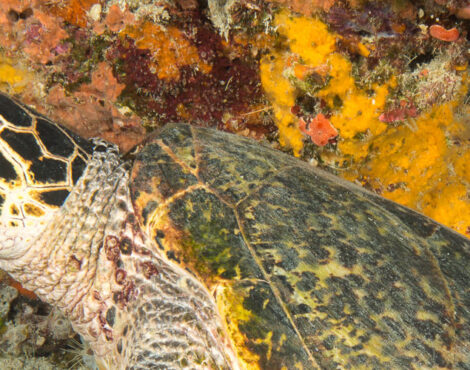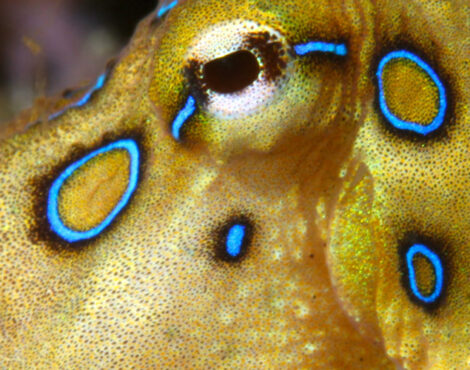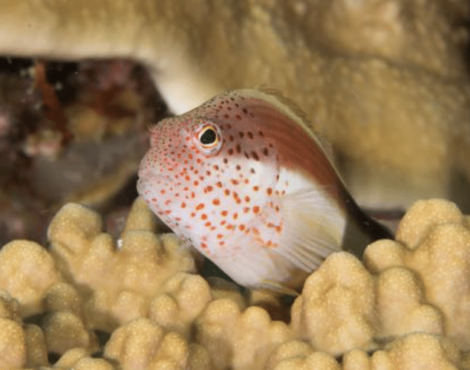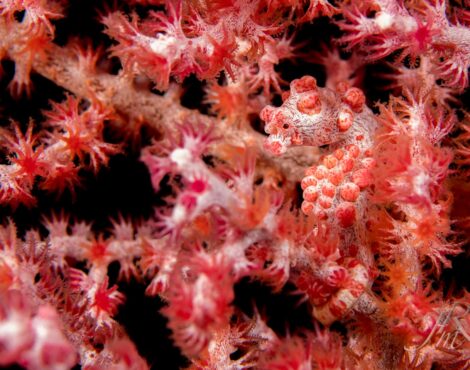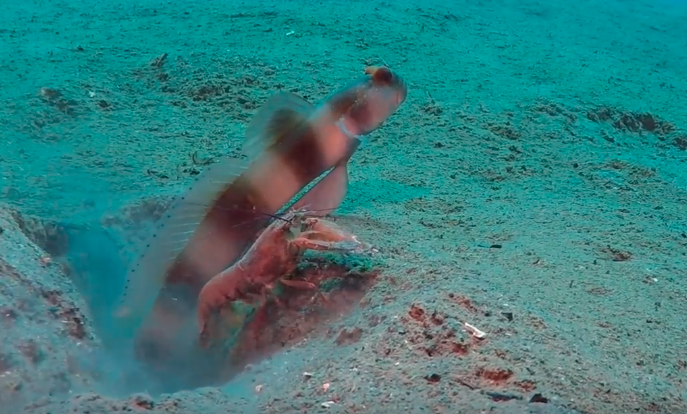
All around the world, millions of different organisms are interacting with one another in what we call âSymbiotic Relationshipsâ.
Mutualism is a form of symbiotic relationship where two or more species are living together, and each species is somehow getting an advantage from that relationship. There are examples of this everywhere you look, and underwater is no exception.
Bunaken Marine Park is one of the most diverse coral reef ecosystems in the world. Obviously, there is lots of conflict and aggression between competing species, but there is harmony too. Everywhere you look â whether diving or snorkelling â you can see many species co-existing side by side. There are simply too many to talk about in one go, so for now we will focus on one of our favourites â the Pistol Shrimp and the Goby.
What is a Goby?
Gobies are actually one of the largest fish families with over 2,000 known species. They are also one of the most common fish found within Bunaken Marine Park, although they often go ignored by divers seeking more exotic critters. They are normally small fish, with most species growing less than 10cm in length, although there are a few larger exceptions.
They have very little natural defences against predators, so they rely on their habitat for survival. Most species can be found living in association with other species, such as branching corals and wire corals. They can move very quickly in short bursts, so when threatened, they can quickly dart in-between or around their coral homes.
The problem is, these coral reefs they live on can often be lacking in food as competition is high. It might seem that more food rich areas such as sandy slopes, rubble patches and soil/muck would be off limits to the defenceless little gobies, however some goby species have acquired a little assistance from pistol shrimps to help them survive in the open.
What are Pistol Shrimps?
Also known as âsnapping shrimpâ, pistol shrimp are a small species of shrimp â usually no more than 5cm â with a distinctively large claw. These are not like typical claws as they do not have pincers at the end. Instead, their claw works more like a pistol, with a part known as the hammer, which moves into a right angled position and snaps onto the other part of the claw. This sudden release of energy creates a powerful wave of bubbles that can stun larger fish, or even break glass.
When they form colonies, the sound from their snapping claws is so loud it can even interfere with underwater communication systems and sonar.
These shrimp are great at digging burrows as they can use their huge claw to push large amounts of sand and rubble. What they are not so good at, however, is seeing. They have relatively poor vision, which is far from ideal when they spend lots of time in the open building their burrows.
Luckily, they can get some assistance from another species that has quick reflexes and excellent vision; Gobies.
Why do Gobies and Pistol Shrimp Live Together?
So here we have two very different species with contrasting abilities.
The shrimp will spend their days building a suitable home, large enough for both the shrimp and the goby. Although the shrimp cannot see very well, it can use its antennae to help navigate around the burrow. It will take any loose rubble or sand and push it out of the burrow, where the goby will be waiting. The goby will spend its day just outside the burrow, watching for any dangers. Should anything get too close, the goby will alert the shrimp, and both will back off to the safety of the burrow.
The method of communication between goby and pistol shrimp is via the long antennae of the shrimp. If the shrimp wants to leave the burrow, it will extend this antenna and touch the fin of the goby. If it is safe to exit, the goby will move its fin in a certain way to signal to the shrimp that the coast is clear. Once the shrimp is out of the burrow, it will keep its antenna of the gobyâs fin, and should any danger approach, the goby will give another warning to the shrimp that it needs to retreat.
Both of these creatures are diurnal â which means they are active in the day, and dormant at night. Once the sun goes down, many small eels come out of their own burrows to search every crack and crevice on the reef, looking for any potential food. To avoid predation, the shrimp and goby will always leave small bits of rubble at the opening of their burrows. As it begins to get dark, the shrimp will gather these bits of rubble and seal the entrance to the burrow. Now they are safe until morning, when the shrimp will push the opening and repeat the routine.
This mutualistic relationship can be observed at almost every dive site around Bunaken Marine Park, although the number of encounters is far higher on the sandy slopes around North Sulawesi and Manado Bay.
They make extremely interesting macro photography subjects, although extreme patience is required to get a good shot. They are extremely skittish, and the moment you get close (this distance is generally the exact point that you are within focal rangeâ¦), the goby will warn the shrimp and both will disappear. The best way to get a shot is to make sure you stay as low as possible, and slowly inch yourself towards the burrow. If you take enough time, you will not be seen as an imminent threat and they will allow you to get a little closer. For those who like the make video, an easier method is to swim up to the burrow normally and set your camera on the bottom â preferably on a tripod if you can, and take care it doesnât touch any marine life. You can just leave the camera on record for a few minutes as the goby wonât see the camera as a threat, and them come and pick it up when you are ready.


